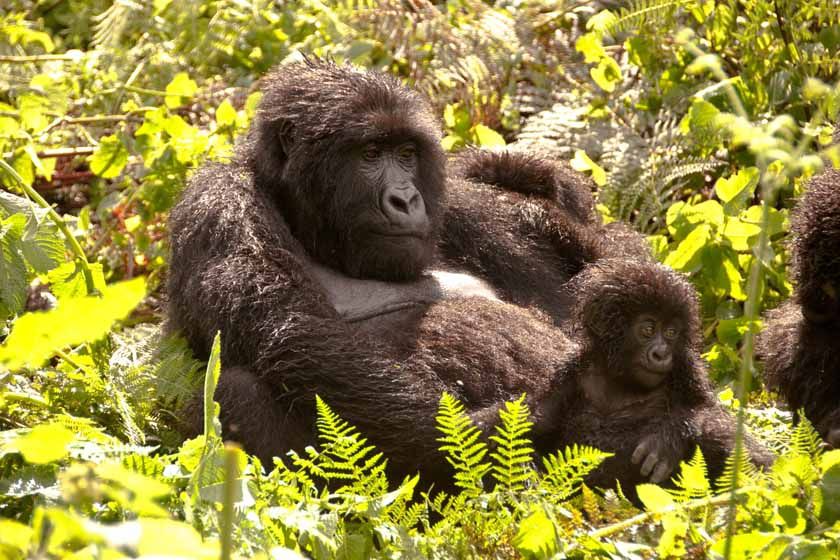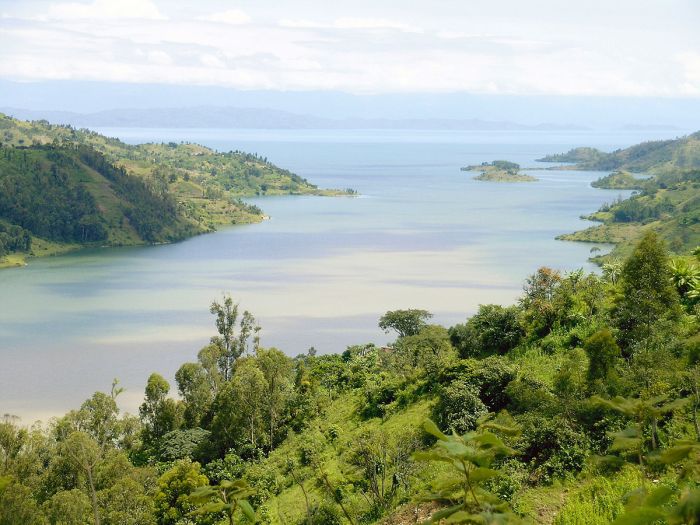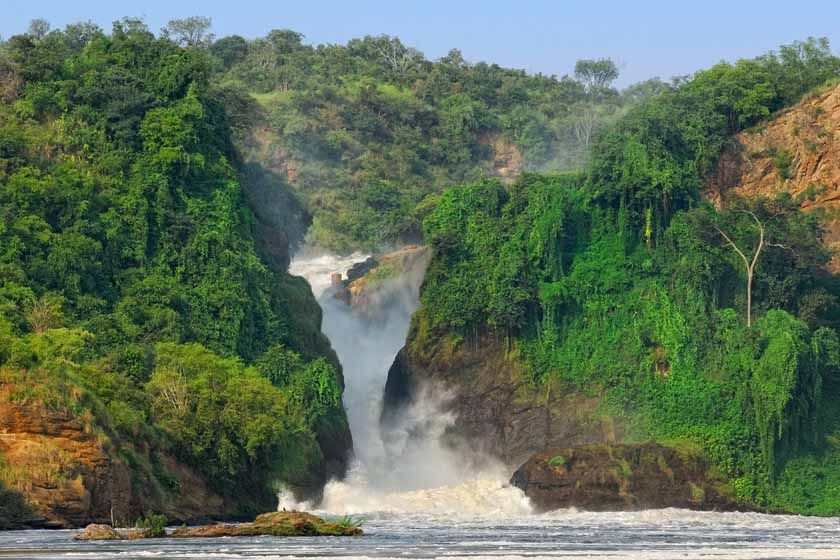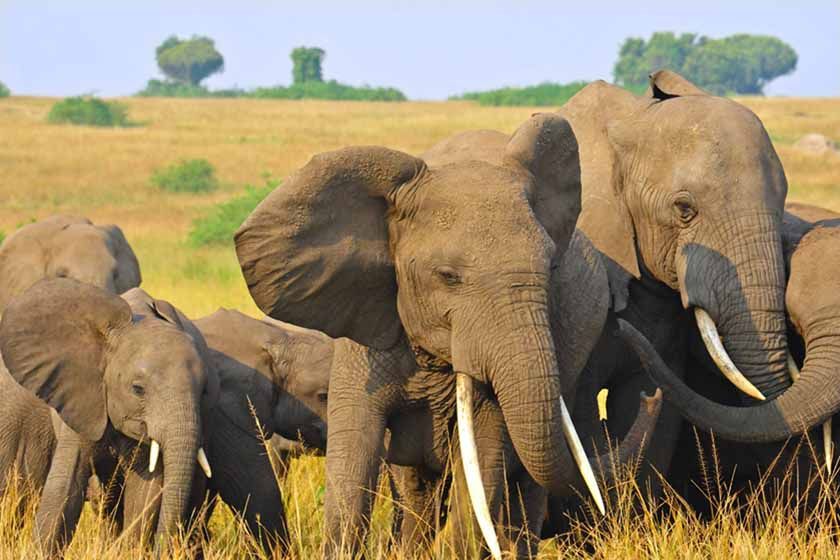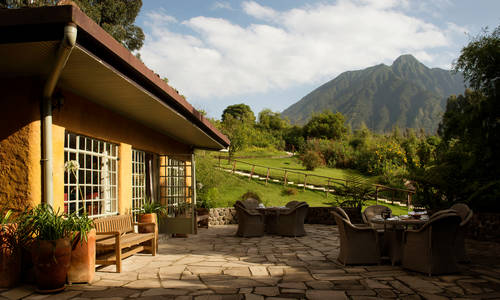Article content
28 August 2020 by Alison Nicolle
There's nothing quite like coming eyeball to eyeball with some of our closest living relatives in their natural environment. Here is our comprehensive guide to tracking mountain gorillas in Rwanda and Uganda.
The mountain gorilla has become an icon of ecotourism and conservation. Ever since Sir David Attenborough was seen surrounded by gorillas in Life on Earth more than 30 years ago, visitors have been flocking to the thick montane forests that cloak the mountains of Rwanda and Uganda, in the hope of encountering these powerful yet gentle creatures. Both Rwanda and Uganda offer excellent chances of sighting gorillas, and very few tourists return disappointed.
- Track mountain gorillas in four famous parks in Uganda and Rwanda
- Go on a gorilla and chimpanzee safari in Uganda and Rwanda
Gorilla groups & where to find them
Though still critically endangered, the mountain gorilla is the only great ape known to be increasing in number, much of this due to dedicated conservation initiatives and revenue brought in from gorilla tourism. Approximately 880 mountain gorillas survive in the world today. The majority are found in the Virunga Mountains, which straddle Rwanda, Uganda and the Democratic Republic of the Congo, and live a wild existence, far from human contact.
A few groups, however, have become accustomed to human visitors (habituated) and can be tracked and observed by small groups of tourists accompanied by trained guides and rangers. Around 99% of these magical encounters occur either in Rwanda's Volcanoes National Park or in the Bwindi Impenetrable National Park in Uganda.
At the time of writing, Volcanoes National Park contained ten habituated gorilla groups, the largest made up of 33 individuals, including two silverbacks and the twins, Byishimo and Impano. This group, the Susa, was famously studied by Dian Fossey, whose work was dramatised in the Hollywood film, Gorillas in the Mist.
Although still the largest group in Rwanda, the Susa family was in fact 42 strong until it split in 2008. Be warned, however, that both the Susa and its splinter group, the Karisimbi, can be hard to track, as they tend to range high into the mountains.
Other groups, by contrast, can be found within a two-hour walk from the park entrance and range in size from 11 to 27 members. All groups have at least one silverback.
Bwindi, likewise, has ten habituated gorilla groups, ranging in size from five to 25 members; nine groups are available for tracking while the tenth is set aside for research purposes. All groups have between one and four silverbacks and at present all families have infants. The national park comprises 331 square kilometres of undulating hills, montane and lowland forest. The terrain can be difficult to navigate on foot and with gorilla groups spread across the breadth of the park, tracking gorillas in Bwindi is often seen as more arduous than it is in Rwanda - though no less rewarding when you find yourself seated with these gentle giants.
Permits
A permit must be obtained in advance to visit the gorillas. Due to the animals' vulnerability, hikes into the parks are kept to parties of eight or fewer people per habituated gorilla group, visiting for a maximum of an hour each day, and approaching no closer than seven metres. With just ten gorilla groups in each park, permits are therefore extremely limited. To avoid disappointment, we suggest you apply as far in advance as possible, something your Wexas specialist will be happy to help you with.
At the time of writing, permits cost US$750 in Rwanda and US$500 in Uganda.
This money not only pays for your guides, their training and equipment, it also goes towards conserving the gorillas' habitat, anti-poaching efforts and countless community projects, as well as helping to fund other national parks in both countries.
A typical day's tracking
A typical day's gorilla tracking will start early, often with breakfast well before dawn and a drive of up to an hour or two to the park HQ. Here you'll have your permits checked, be assigned your guide and be grouped in terms of fitness levels. The guides will have an idea of the whereabouts of the gorilla groups and you'll likely be able to choose between a short, medium or long hike. Be realistic: difficult terrain, steep slopes and high altitudes require a reasonable level of fitness and you could hamper your own and the group's enjoyment if you try to bite off more than you can chew.
A short drive to the park boundary and a walk in the open will then bring you to the shade of the forest. This is the last point at which you can own up to having a cold. Breathing germs in the presence of gorillas puts the animals at great risk. If you do have a cold and let your guides know now, you'll likely receive a refund; show symptoms later and the chances are you'll be escorted from the park without one.
Once in the forest you'll begin to snake up and down hill, single file, often on muddy paths or pushing through thick vegetation, marveling all the while at the mountain vistas. You'll know you're hot on the trail if you start to see gorilla dung - to see how hot touch the back of your hand to the dung; if it's warm you're close.
A typical trek can last anywhere from 30 minutes to five hours. Your patience, however, will be richly rewarded. Noting compares to watching mothers with their infants, juveniles chasing each other around a clearing or misjudging a branch and crashing to the floor, or holding the gaze of a 24-stone silverback, his cautious curiosity bringing him ever closer.
All too soon though your hour will be up, so be sure to make the most of every single second.
Gorilla etiquette
Whilst the gorillas you'll encounter are habituated, they are still wild animals. A few simple rules can help keep both species safe. First and foremost, always follow your guide's instructions. Don't get too close. You're normally asked to stay at least seven metres from the gorillas, to minimise the risk of transferring germs. A direct stare may be interpreted by a gorilla as rude or aggressive; glance sideways to be less intrusive. Don't point, speak softly (if at all), turn off your camera flash, and try to sit or kneel while you're watching the gorillas - not only will the people behind you be grateful but you'll also seem less intimidating to the gorillas, who tend to only stand on two legs to impress or frighten.
What to wear
Unsurprisingly, the rainforest can be very wet, even in the drier seasons, so make sure you pack a waterproof jacket. The early start will be fresh so make sure you have layers you can remove once you start walking. Long trousers and a long-sleeved shirt will protect you from nasty stinging nettles and insects, and comfortable walking shoes are an absolute necessity. And whatever you do, don't forget to bring a fully charged camera for those intimate close ups (spare batteries may also be a wise idea). Fresh water, snacks for the hike and a hat and sunscreen are also advisable.
There are porters who will carry your bags and help you up and down the steeper slopes for a small fee; most of them are ex-poachers so your money is helping to support the local community and gorilla conservation.
When to go gorilla tracking
Permits are available all year round, however visiting in the dry seasons (December-February and June-September) is recommended. The national parks are tropical forests sitting high in the mountains with thick vegetation, so the task of hiking is made much easier when the terrain is less slippery. Make sure you book your permits at least four months before travelling; with limited permits you could risk missing out.
Rwanda or Uganda?
Although both Rwanda and Uganda seem to offer similar things: a high chance of seeing gorillas, good accommodation options and professional and friendly guides, the overall experience can differ significantly.
Rwanda
Rwanda is statistically more popular, having been launched into the public eye by the BBC's Life on Earth series and the work of Dian Fossey. It's also smaller than Uganda so lends itself to a much shorter trip. Volcanoes National Park is only a short, two-hour drive along good main roads from Kigali International Airport, meaning it's easy for people to fly in, stay for just two or three nights to see the gorillas and move on to other parts of Africa. The terrain within the park is also marginally more open than it is in Bwindi, making it easier to spot gorillas, and although treks for several hours are not uncommon, gorillas are sometimes found after just a short stroll from the park boundary.
Should you wish to stay longer, other highlights in Rwanda include beautiful Lake Kivu, whose sandy shores lay only two hours from Volcanoes National Park, and the Nyungwe Forest, probably the best preserved rainforest in the mountains of Central Africa, home to 13 species of primate and many rare bird species, including forest hornbills and blue turacos. All major attractions are within a five-hour drive from the capital Kigali, where we recommend a visit to the Kigali Memorial Centre, a moving memorial to the victims of the 1994 Rwandan genocide.
Uganda
Seeing gorillas in Uganda will require a longer stay. Travelling to Bwindi Impenetrable National Park is a long but beautiful journey, taking approximately eight hours from Entebbe International Airport. It requires at least a day's travelling either side of your trek. The name 'impenetrable' is not to be taken lightly; difficult terrain and thick vegetation make tracking gorillas in Uganda a harder option than the Rwandan alternative.
But Uganda's real plus point is the range of activities on offer outside of Bwindi. The Kibale Forest is one of the best places in Africa to see chimpanzees in the wild. Morning and evening game drives in Queen Elizabeth National Park offer excellent chances of spotting lion, leopard, elephant, buffalo, as well as a wide variety of antelope and birdlife. Walking safaris in the Ziwa Rhino and Wildlife Ranch can bring you within metres of southern white rhinos. There's great trekking to be had among the Rwenzori Mountains (Mountains of the Moon). And Murchison Falls, in the north-west of the country, is one of the most spectacular waterfalls to be found on the Nile, the source of which incidentally lies in Jinja, a mecca for white-water rafting enthusiasts.




